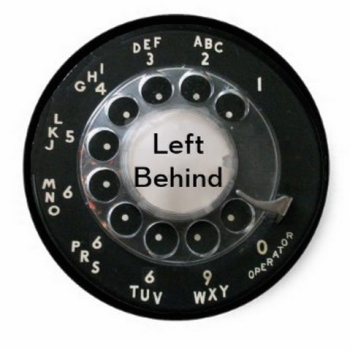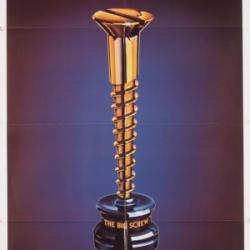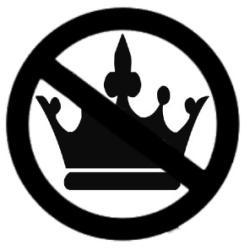From December 24, 2018, “William Knibb was an evangelist”
Every evangelist and church-planter dreams of the kind of revival William Knibb led, but none of them wants to do the preparation.
I thought about writing a click-bait parody headline for this post, something like “Soul-winning Secrets of a Master Missionary” or “This One Trick Turned a Revival into an Awakening.”
You can find headlines like that all over the Web. The following are all real, results of a Google search for this kind of thing:
- “3 Little Known Secrets to Effective Evangelism”
- “7 Proven Methods to Be an Effective Soul-Winner”
- “8 Quick Tips for More Powerful Christian Evangelism”
- “7 Habits for Highly Effective Personal Evangelism”
- “Strategic Evangelism: 3 Effective Outreach Opportunities”
- “10 Proven Strategies for an Effective Evangelism System”
- “20 Actionable Strategies for Rapid Church Growth”
- “The Secret Ingredient to Successful Church Planting and Ministry”
Ugh.
Clearly there’s an audience for articles like that — an audience of people earnestly seeking to find greater success in their efforts at evangelism, church growth, and church planting. Some of them may be tempted by articles that promise secret shortcuts or paint-by-numbers success — the spiritual equivalent of a get-rich-quick scheme — but I think most of the pastors or would-be evangelists or church-planters reading such stories are really just hoping for a bit of practical advice, wisdom, or applied common-sense that will help them better pursue their calling.
So let me recommend a remarkable model and resource: William Knibb. Knibb saw the kind of success at all of those things that most pastors or evangelists can only dream of. Here’s how Wikipedia summarizes Knibbs’ historic achievements as a church-planting missionary and evangelist:
During 1838-45 came the religious revival known as the Jamaican Awakening. Many thousands … joined the nonconformist churches. Knibb recalled that “in those seven years, through the labor of about twenty [Baptist] missionaries, 22,000 people were baptized upon their profession of faith in Jesus Christ.” Knibb personally baptized 6,000 converts, and translated the Bible into Creole. …
By 1845, the Baptists in Jamaica had built 47 new chapels to replace those burned down. … Many of the churches … were financially independent. Knibb’s own church at Falmouth had grown over the previous ten years from 650 to 1,280 members. Over 3,000 adults had been baptized, two thirds of whom had been sent out to form new churches. Six daughter churches were planted by the Falmouth church alone. Knibb was personally associated with the founding of 35 churches, 24 missions, and 16 schools.
Whatever it is that the readers of all those strategies/tips/secrets/methods articles are looking for, William Knibb had it. He had it in abundance.
So what was the secret? What was Knibb’s strategy or method that produced such astonishing success?
Well, to understand the remarkable growth and revival taking place in Jamaica’s Baptist churches from 1838 to 1845, you have to understand what Knibb and his fellow Baptist missionaries were doing there before the Jamaica Awakening. The mass-conversions and explosive church growth of that revival began in 1838, but the whole thing started, really, in 1831.
That was the year of the Baptist Rebellion — the general strike turned into a slave uprising led by Knibb’s friend, the enslaved lay-preacher Samuel Sharpe, and organized in Baptist churches throughout Jamaica. It was brutally suppressed by the slave-holding white plantation owners, with Sharpe and hundreds of others slaughtered, followed by months of terroristic retribution in which the official slavery-supporting churches of the colony formed “Colonial Church Union” mobs that burned down Baptist churches across the island.
Knibb’s church was among those destroyed. The plantation owners hated him, blaming him for the uprising due to his years of preaching against slavery, his empowerment of black pastors and deacons, and his lawsuits against slave-owners who cruelly abused their workers. He was arrested and narrowly escaped a plot to murder him before he returned to England where he campaigned ferociously for the abolition of slavery in British colonies, rallying support for the Slavery Abolition Act passed in 1833.
He returned to Jamaica and began rebuilding the Baptist churches there, commissioning formerly enslaved Jamaicans to serve as pastors and leaders. And that is when the great revival began — when thousands came to be baptized, when the Baptist churches of Jamaica grew by the thousands, spawning dozens more throughout the country.
I have no idea what sort of sermons Knibb preached during that period of mass revival and growth. And I haven’t found any record of the sorts of strategies or secrets or methods he and his churches employed to produce such results. I’m not sure that any particular strategy or secret or method was needed.
The revival wasn’t mainly the result of anything William Knibb did from 1838 through 1845. It was mainly the result of all that he had and so many others had done from 1824 through 1833.
So that, I suppose, is the secret to effective evangelism. It is the proven — actually, tangibly proven — method to be an effective soul-winner. It is the one quick tip for powerful evangelism, the one actionable strategy for rapid church growth, and the one secret ingredient for successful church planting. Dedicate your ministry to justice for the oppressed and liberation for the enslaved, stand with them no matter what and keep at it until The Powers That Be burn your church down and want you dead.
Is Knibb’s approach a ready-made model for evangelism, revival and church growth? Could it be replicated with similar fantastic results in other times and other places? I think so.
But it’s hard to say, because so very few churches and would-be evangelists are interested in trying it.












